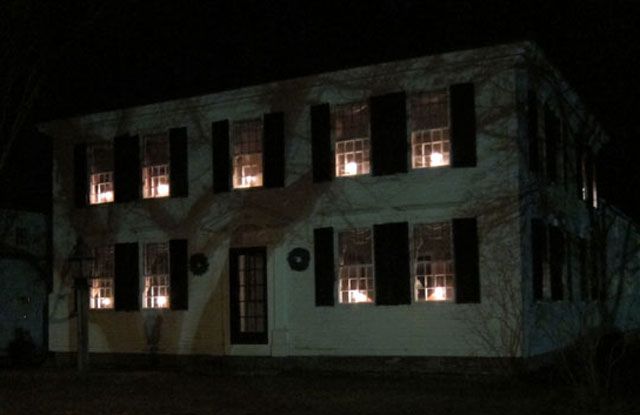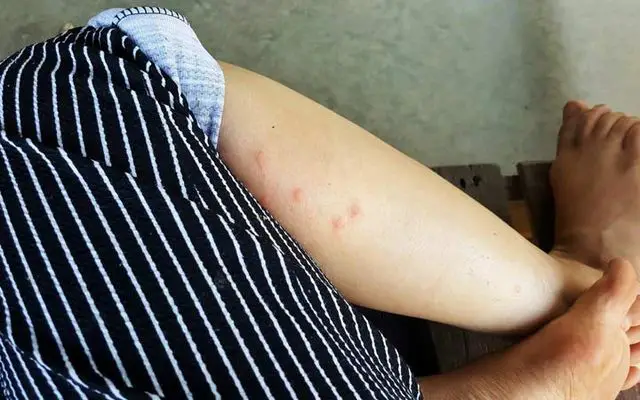Do I Trim Wick Before First Burn?
Should You Trim a Candle Wick Before Burning?
Whether or not to trim a candle wick before the first burn is a debated topic among candle enthusiasts. Some argue that trimming the wick before lighting a candle for the first time is absolutely necessary for safety and performance. Others make the case that leaving the wick untrimmed can actually improve the first burn. There are good points on both sides of this issue.
Those in favor of trimming wicks before burning maintain that it helps the candle perform as intended. An untrimmed wick may curl, tunnel, or create excess smoke and sputtering on the first burn. Trimming it to 1/4 inch can prevent these issues that can otherwise shorten the life of the candle. They view wick trimming as a necessary step, like wicking a zipper or hemming a pair of pants before wear, to ensure proper function.
On the other side, some candle experts argue that not trimming the wick can lead to a better first burn and helps the wax pool properly across the entire surface. The full wick helps sustain an even flame until melted wax starts being absorbed into the wick. Once a pool of liquid wax forms, the wick can then be trimmed as needed for subsequent burns. Leaving the wick longer for the first burn can also help limit issues like tunneling in large candles.
Purpose of a Candle Wick
The wick is an essential part of how a candle works to produce light. The main purpose of the wick is to deliver fuel to the flame and control the rate of burning. As the wick burns, it draws liquid wax up from the pool via capillary action. The liquid wax is then vaporized by the heat of the flame and consumed in the combustion process. The wick essentially acts as a regulated fuel delivery system, working to keep the flame at an optimal size and brightness. Without a properly-sized and trimmed wick, the candle will tunnel, smoke, produce excessive soot, or have a flame that is too large and unwieldy.
Why Some Say to Trim Wicks
Many experts recommend trimming your candle wick before the first burn to prevent excess smoke and sooting. When a wick is too long, it can produce larger flames that give off more soot. This black residue can dirty candle jars and emit more smoke into the air. Trimming your wick to just 1⁄4 inch before lighting can minimize these issues.
Long wicks tend to curl over into the melted wax pool as they burn. This curved shape leads to an uneven flame that is prone to smoking. It also allows the wick to absorb more liquid wax, fueling a larger fire. Trimming the wick prevents it from bending and maintains a shorter, steady flame.
In addition, freshly poured candles often have wicks that are overly long and stringy. Manufacturers intentionally leave them untrimmed to account for shrinkage during shipping and storage. A quick snip with scissors just prior to the first burn can normalize the wick length and prevent problems.
By cutting the wick down to size beforehand, you allow for a cleaner, more controlled burn with less soot and smoke. This helps maximize candle enjoyment without residue buildup or breathing concerns.
Why Some Say Not to Trim
Some candle enthusiasts caution against trimming the wick before the initial burn because it can lead to improper wick performance. When you trim an unused wick, the end becomes blunt. This makes it more difficult for the wick to curl properly as the candle burns. Without that curling action, the wick may create excess smoke or struggle to draw up the melted wax.
The natural curling of an untrimmed wick helps regulate the flame and ensure proper burning. Trimming off the tip before that initial curl can interrupt this delicate balance. Enthusiasts argue that it’s best to let the wick naturally find its ideal shape and length within those first one to two hours of burning.
Best Practices for Wick Trimming
Trimming the wick before lighting a new candle is generally recommended for optimal performance and safety. Here are some best practices for wick trimming:
Trim the wick to 1/4 inch before the first burn. Use scissors or nail clippers to snip the wick down to a stubby height before lighting. This prevents excessively large flames and sooting when you first light the candle. A shorter wick will allow the melted wax pool to climb up the wick before becoming too large.
Trim the wick as needed after each burn. Once the candle is in use, trim the wick back down to 1/4 inch any time it gets too long, develops a mushroom top, or starts producing smoke or excess soot. This helps maintain proper wick height and prevent issues. Aim to trim wicks after each use for optimal safety.
Avoid leaving long wick remnants. When trimming, snip the wick neatly instead of leaving tattered ends. This helps the wax melt and climb the wick evenly when burning.
Wick Material Considerations
The material a candle wick is made from can impact how it burns and whether it should be trimmed before first use. There are two main types of wick materials:
Natural Wicks
Natural wicks are typically made from materials like cotton, wood, or paper. These wicks tend to be thick and dense. As a result, they often produce more soot and require more trimming than synthetic wicks.
With natural wicks, it’s generally recommended to trim them before the first burn. This helps remove any loose fibers and allows the wick to curl over as it melts, preventing excess smoke or irregular burning.
Synthetic Wicks
Synthetic wicks are made from man-made materials like nylon or rayon. They tend to be thinner and more tightly braided than natural wicks.
Synthetic wicks usually don’t require trimming before the first burn. Their construction means they don’t have many loose fibers. Trimming them too short can actually cause them to curl irregularly and smoke.
With synthetic wicks, it’s often best to simply let them burn as-is the first time. Then you can monitor how they perform and trim if needed for subsequent burns.
Candle Wax Considerations
The type of wax used in a candle can impact whether or not the wick needs trimming prior to the initial burn. Some waxes like paraffin and vegetable waxes tend to produce more soot than beeswax or soy wax. This is because paraffin is a petroleum byproduct while soy and beeswax are natural waxes. The natural waxes burn cleaner and produce less soot.
When a candle is made from a wax that generates more soot like paraffin, it becomes even more important to trim the wick before the first burn. This helps prevent excess soot buildup on the wick which can cause smoking, tunneling, and an uneven flame. Trimming the wick of paraffin candles allows for a cleaner, more even first burn.
On the other hand, waxes like soy and beeswax are less prone to sooting issues, so pre-trimming the wick is less critical. Their natural properties allow them to burn cleaner right from the initial light. However, it is still good practice to trim the wick slightly to remove any stray fibers and ensure the best possible first burn.
The takeaway is that the type of wax impacts the importance of wick trimming. Pre-trimming helps remove excess wick that can cause sooting problems, which is especially useful for paraffin candles. But even natural wax candles benefit from a quick initial trim to optimize the first burn.
Jar vs. Freestanding Candles
Whether a candle is jarred or freestanding can impact how much you need to trim the wick. Jar candles often require more frequent trimming than freestanding candles.
With jar candles, the glass jar traps more heat than exposed candles. This extra heat can make the wax pool higher and hotter. As a result, the wick gets consumed faster in jar candles. Trimming the wick helps maintain a proper melt pool and prevent soot.
Freestanding candles like pillars or tapers tend to require less trimming. Since they are openly exposed on all sides, heat dissipates more quickly and doesn’t intensely concentrate at the top around the wick.
Additionally, jar candles often use a different type of wax that is softer and melts at a lower temperature. This softer wax tends to burn faster, creating a need for more frequent wick trimming.
The shape of the jar also matters. Shorter, wider jars concentrate more heat than tall, narrow ones. Watch jar candles carefully and be prepared to trim the wick frequently to prevent mushrooming.
Safety Concerns
Trimming the wick before the first burn can help prevent safety issues like unwanted smoke or fire. When a wick is too long, the flame can get too large and create thick black smoke or catch other items on fire. This is because a long wick allows more wax to melt at once and release more energy than a shorter wick. Trimming the wick prevents excess wax from melting and creates a smaller, steadier flame.
However, you do need to be careful when trimming the wick, as clipping too short could prevent the candle from lighting properly. Only trim off 1/4″ to 1/2″ before first use. Use a wick dipper tool or clean nail clippers for a safe trim. Avoid using scissors or knife blades near an open flame. Always keep candles on a stable, heat resistant surface and away from flammable items. Never leave a burning candle unattended. With proper trimming and safe use, candle fires can be prevented.
The Bottom Line
Based on expertise and extensive research into candle wicks, trimming the wick before the first burn is recommended in most cases. Here’s a summary of the key points:
- Trimming the wick to 1⁄4 inch helps prevent issues like tunnelling, smoking, and sooting.
- It creates an even burn and maximizes how the wax pools.
- The manufacturer has often just roughly trimmed wicks, leaving them too long.
- Yes, wicks are treated nowadays to self-trim, but only to a certain extent.
- It’s quick and easy to trim with wick trimmers or nail clippers.
- Trimmed wicks mean fewer blowouts and less need to monitor the candle.
- Certain specialty candles like beeswax may not require trimming.
- Safety-wise, trimmed wicks create less smoke and risk.
While not always mandatory, trimming the wick before burning is recommended for most candles. Doing so helps the candle perform optimally and remain safe.



